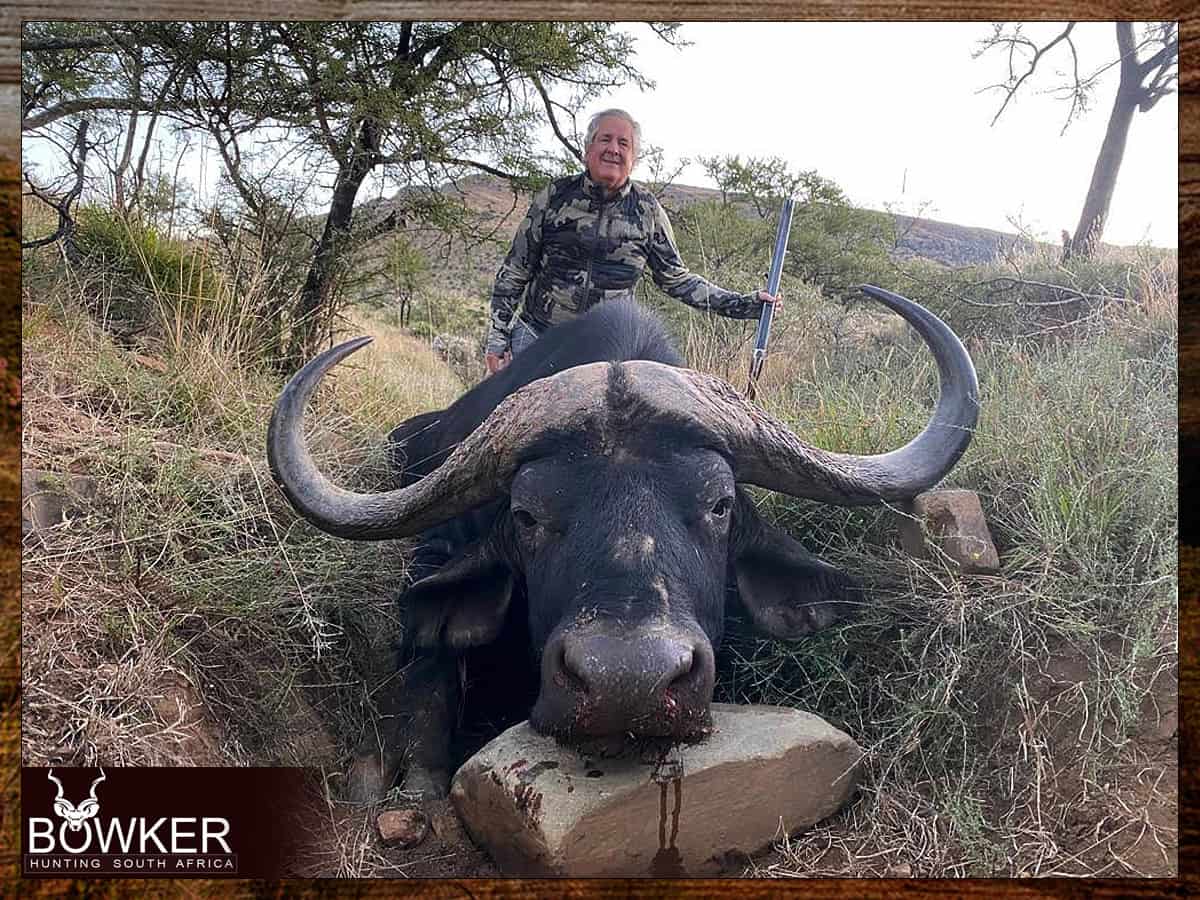Table of Contents
Introduction to Choosing the Perfect Binoculars for an African safari
Embarking on an African hunt safari is a dream for many nature enthusiasts and wildlife lovers. The vast landscapes, diverse ecosystems, and incredible array of wildlife make it a once-in-a-lifetime experience.
To truly immerse yourself in the beauty of the African wilderness, a reliable pair of safari binoculars is an essential companion. In this guide, we’ll explore the key factors to consider when choosing hunting binoculars, ensuring you make an informed decision that enhances your safari hunting adventure.
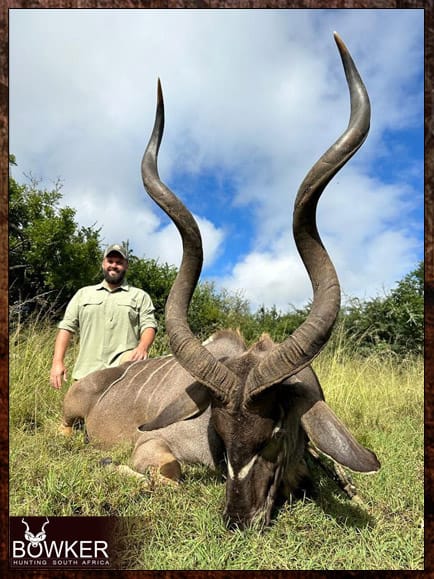
Why are good hunting binoculars important for hunting in Africa?
- Observation and Scanning:
- The vast and diverse landscapes of Africa require keen observation skills to spot wildlife from a distance. Good binoculars enable hunters to scan large areas efficiently, identifying potential targets and assessing their surroundings.
- Target Identification:
- Positive identification of a target is crucial for ethical and responsible hunting. High-quality safari binoculars with clear optics allow hunters to identify species, gender, and trophy quality accurately, minimizing the risk of making mistakes that could lead to unintended consequences.
- Tracking and Stalking:
- Binoculars aid in tracking the movements of animals, allowing hunters to plan and execute strategic approaches for a successful stalk. The ability to observe from a distance helps avoid detection, increasing the likelihood of getting within a suitable shooting range.
- Distance Estimation:
- Many modern safari binoculars come with rangefinders, which assist hunters in accurately estimating distances to their targets. This is crucial for making precise and ethical shots, particularly in the diverse and often challenging terrains of Africa.
- Low-Light Performance:
- African safaris often involve early morning and late evening hunts when light conditions are suboptimal for wildlife viewing. Quality binoculars with superior low-light performance ensure that hunters can continue to observe and identify the game even in dim lighting, extending the time available for hunting.
- Durability and Weather Resistance:
- African environments can be harsh, with dust, humidity, and unpredictable weather conditions. Good safari binoculars are built to withstand these challenges, featuring durable, waterproof, and fog-proof constructions that can endure the rigors of the safari environment.
- Safety and Awareness:
- Binoculars provide an enhanced field of view, allowing hunters to survey their surroundings more effectively. This not only aids in spotting potential game but also enhances overall situational awareness, contributing to safety in the field.
- Memorable Experience:
- A high-quality pair of compact binoculars enhances the overall safari experience. Clear, bright, and detailed views through premium optics contribute to appreciating Africa’s stunning landscapes and diverse wildlife, creating lasting memories for the hunter.
In summary, good safari binoculars are indispensable tools for an African hunt safari, providing hunters with the optical capabilities needed for observation, target identification, and successful stalking. Investing in quality binoculars enhances the overall hunting experience while promoting responsible and ethical hunting practices.
What optics do we use as a Guide for Safaris in Africa?
At Nick Bowker Hunting, we believe high-quality safari binoculars are the most important piece of hunting gear for a safari. We spend hours glassing through varied terrain while game viewing. You will miss out on large parts of the safari by not having a good set of optics.
All our guides carry high-end optics with range finders. They will give you an exact range as you prepare to take your shot. If budgets allow, we suggest having binoculars with a range finder, further enhancing your African safari experience. Although remember, your guide has a range finder in his safari binoculars.
We use 10 x 42 Leica and Swarovski Safari binoculars. They are compact, light, and versatile.
Magnification and Objective Lens Size
One of the most critical aspects of selecting safari binoculars for an African hunt safari is understanding the magnification and objective optical lens size. Commonly denoted as two numbers (e.g., 8×42), the first number represents the magnification power, while the second indicates the diameter of the objective lens in millimeters.
For an African safari, a moderate magnification of 10x is recommended. Higher magnification may result in shaky images due to hand movements, challenging spotting and tracking wildlife. Additionally, around 42mm, a larger lens allows more light to enter the binoculars, ensuring clear and bright images even in low-light conditions common during dawn and dusk safaris.
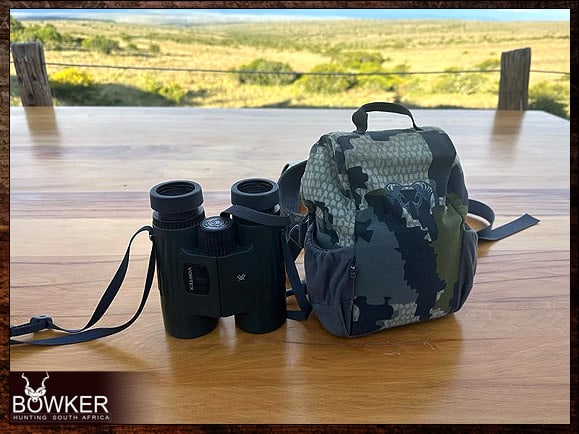
Field of View for a Safari Binocular
The field of view is the width of the area visible through the safari binoculars at a specific distance. In the vast landscapes of Africa, a wide field of view is advantageous for locating and tracking animals with binoculars. A wider field of view is especially beneficial when observing fast-moving wildlife or scanning large areas for distant sightings.
When selecting safari binoculars, opt for models with a field of view of at least 300 feet at 1000 yards. This wide perspective enhances your ability to enjoy panoramic views and spot target animals that may be outside your immediate line of sight.
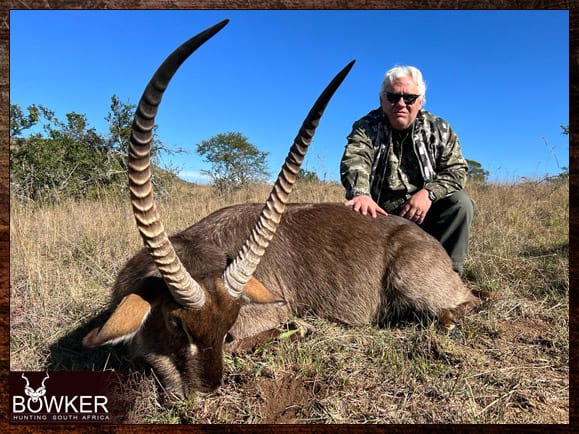
Size and Weight
Considering the physical demands of an African safari, the size and weight of your binoculars are crucial factors. You’ll likely spend hours carrying them, so it’s essential to strike a balance between performance and portability.
Compact, lightweight binoculars with a durable, ergonomic design are ideal for safari adventures. Look for models that are easy to handle and fit comfortably in your hands. Additionally, consider investing in a binocular harness or strap for convenience and to reduce neck strain during extended use.
Durability and Weather Resistance for Hunting
African hunting safaris can expose your equipment and binoculars to challenging conditions, including dust, moisture, and extreme temperatures. Therefore, durability and weather resistance are paramount when choosing safari binoculars.
Opt for models with a robust, rubberized exterior that provides a secure grip and protects against impacts. Look for waterproof and fog-proof binoculars, ensuring they can withstand sudden rain showers or early morning dew without compromising optical performance.
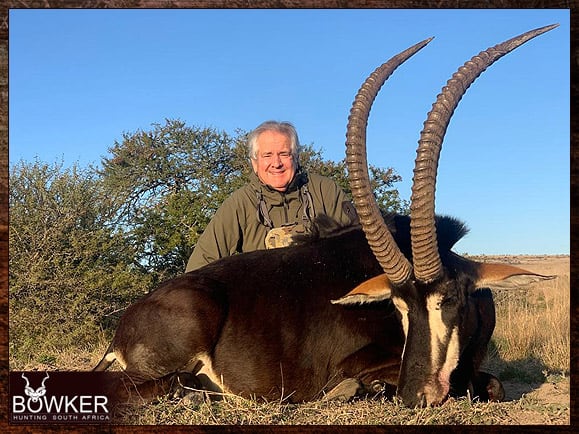
Optical Coatings
The quality of optical coatings on binocular lenses significantly influences image clarity, brightness, and color fidelity. Multi-coated or fully multi-coated lenses reduce glare, enhance contrast, and deliver vibrant, true-to-life colors.
Quality coatings also play a role in low-light performance, a crucial consideration for dawn and dusk game drives. A higher price tag often corresponds to better optical coatings, so consider your budget in relation to the optical quality you desire in binoculars.
Focus System
Binoculars have two primary types of focus systems: center focus and individual eyepiece focus. Center focus is more common and user-friendly, allowing you to adjust both barrels simultaneously using a central focusing wheel. On the other hand, individual eyepiece focus requires adjusting each eyepiece separately and is commonly found in high-magnification binoculars.
For most safari enthusiasts, a center focus system is recommended for its ease of use and quick adjustments when observing moving wildlife.
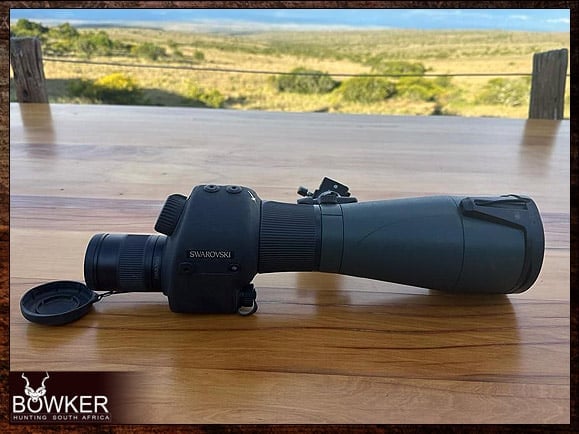
Image Stability for Wildlife Viewing
Steady hands are crucial for observing distant subjects with high magnification binoculars. Image stabilization technology can significantly enhance your viewing experience by compensating for hand tremors and vibrations, providing a more stable image.
While binoculars with image stabilization are often pricier, they can be a worthwhile investment for those who prioritize image clarity, especially when observing wildlife from a moving vehicle.
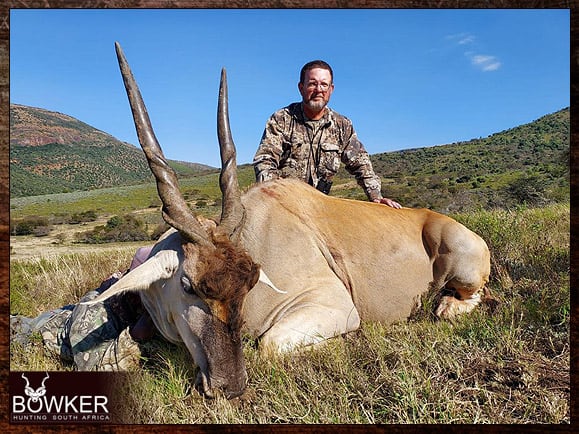
The Impact of Light on Binoculars
Brightness and Low-Light Conditions: The ability of binoculars to gather and transmit light directly affects their performance, especially in low-light conditions such as dawn or dusk. Binoculars with larger objective lenses, like 42mm or 50mm, permit more light to enter the optics, resulting in brighter and clearer images. This feature is particularly crucial for activities like wildlife observation or astronomy, where optimal visibility during low-light periods is essential.
Lens Coatings and Light Transmission: Lens coatings significantly impact how binoculars handle light. Multi-coated or fully multi-coated lenses reduce glare, enhance contrast, and maximize light transmission, contributing to sharper and more vibrant images. High-quality coatings are especially beneficial in challenging lighting situations, such as when observing subjects against a bright sky or in hazy conditions.
Color Fidelity and Contrast: The influence of light extends to color fidelity and contrast in observed images. Superior optics and coatings help maintain true-to-life colors and enhance contrast, ensuring that the viewer sees a rich and detailed representation of the observed scene with binoculars.
In summary, the impact of light on binoculars is multi-faceted, affecting image brightness, clarity, color accuracy, and overall viewing quality. Choosing binoculars with features that optimize light transmission and handling is essential for a rewarding and immersive experience, particularly in diverse lighting conditions encountered during outdoor activities.
Eye Relief in Binoculars
Eye relief in binoculars refers to the distance between the eyepiece lens and your eye at which you can see the entire field of view without vignetting or shadowing. This distance is typically measured in millimeters and is crucial for users who wear eyeglasses or those who want to maintain a comfortable viewing experience.
For individuals who do not wear eyeglasses, eye relief may not be a critical factor, but for eyeglass wearers, it becomes crucial. When wearing glasses, the eyes are farther from the eyepiece, and if the eye relief is insufficient, you may not be able to see the entire field of view. In such cases, adjusting the eyecups (if they are adjustable) or finding binoculars with longer eye relief is essential.
Here are a few key points related to eye relief in binoculars:
- Long Eye Relief: Binoculars with long eye relief (usually 15mm or more) are suitable for eyeglass wearers. This design ensures that individuals can see the entire field of view without having to press their glasses against the eyepiece.
- Short Eye Relief: Binoculars with short eye relief (typically less than 15mm) may cause vignetting or shadowing for eyeglass wearers, leading to a compromised viewing experience.
- Adjustable Eyecups: Some binoculars come with adjustable eyecups, allowing users to customize the eye relief. Twist-up or fold-down eyecups are common features that cater to both eyeglass and non-eyeglass wearers.
When choosing safari binoculars, especially if you wear glasses, it’s essential to consider eye relief to ensure a comfortable and unobstructed view. Reading the specifications of a binocular model or trying them out in person can help you determine if the eye relief is suitable for your needs.
Range Finders
One of the primary responsibilities of any ethical hunter is to ensure precise shot placement. Range finders provide hunters with accurate distance measurements to their target, allowing them to make informed decisions about shot placement.
This is critical for delivering humane and effective shots that minimize the suffering of the targeted animal. The use of range finders aligns with the principles of ethical hunting, promoting a quick and humane harvest.
Several Safari binoculars have precise range-finding capability by pressing a button.
The Pros and Cons of 8 x 42 versus 10 x42 and 10 x 50 Binoculars
8×42 Binoculars:
Pros:
- Stability: Lower magnification (8x) provides a more stable image, making it easier to hold the binoculars steady, especially without a tripod. This is beneficial for extended periods of observation.
- Wider Field of View: Generally, 8x binoculars offer a wider field of view, making it easier to track moving subjects and observe a broader area at once.
- Brighter Image: 8×42 binoculars can be more forgiving in low-light conditions with a smaller objective lens than higher-magnified binoculars.
Cons:
- Less Detail: Lower magnification safari binoculars mean you might have slightly less detail when observing distant subjects than using higher-magnified binoculars.
10×42 Binoculars:
Pros:
- Increased Detail: The higher magnification safari binoculars (10x) provide more detail when observing distant objects, making these binoculars suitable for birdwatching and wildlife observation.
- Versatility: 10×42 binoculars strike a balance between detail and stability, making them versatile for various activities.
Cons:
- Slightly Reduced Stability: Higher magnified binoculars can produce a shakier image if not supported by a steady hand, tripod, or other stabilization methods.
10×50 Binoculars:
Pros:
- Increased Light Gathering: The larger 50mm objective lens allows more light to enter, making 10×50 binoculars ideal for low-light conditions, such as dawn or dusk.
- Enhanced Detail: Similar to 10×42 binoculars, 10×50 provides increased detail, making them suitable for detailed observations.
Cons:
- Heavier and Bulkier: The larger objective lens makes 10×50 binoculars heavier and bulkier, which can be a consideration for those who prioritize portability and ease of handling.
- Potentially Reduced Field of View: Larger objective lenses might result in a slightly reduced field of view compared to 10×42 binoculars, impacting the ability to observe wide areas.
Our recommendation for an African Hunt Safari is 10 x 42.
Budget Considerations for Safari Binoculars
Like any piece of equipment, binoculars come in a wide range of price points. It’s essential to set a realistic budget based on your preferences and needs. While high-end binoculars may offer superior optics and additional features, there are excellent options available at more affordable prices.
Consider your level of commitment to birdwatching or wildlife observation and weigh the cost against the potential benefits of enhanced optical performance and durability.
The below is not a binoculars review but a guideline for cost for well-known brands.
High-End 10×42 Binocular Brands:
- Swarovski Optik:
- Model: EL SwaroVision 10×42
- Price Range: $2,500 – $3,000
- Leica:
- Model: Leica Geovid HD-B 10×42
- Price Range: $2,500 – $3,000
- Zeiss:
- Model: Zeiss Victory SF 10×42
- Price Range: $2,000 – $2,500
Mid-End 10×42 Binocular Brands:
- Vortex Optics:
- Model: Vortex Viper HD 10×42
- Price Range: $500 – $600
- Nikon:
- Model: Nikon Monarch 7 10×42
- Price Range: $450 – $500
- Bushnell:
- Model: Bushnell Legend Ultra HD 10×42
- Price Range: $300 – $400
Low-End 10×42 Binocular Brands:
- Celestron:
- Model: Celestron Nature DX 10×42
- Price Range: $100 – $150
- Barska:
- Model: Barska Blackhawk 10×42
- Price Range: $80 – $100
- Bushnell:
- Model: Bushnell H2O Waterproof/Fogproof 10×42
- Price Range: $70 – $90
Binocular Brands that have range finding capability
1. Leica:
- Model: Leica Geovid HD-B
- Price Range: $2,500 – $3,000
2. Swarovski Optik:
- Model: Swarovski EL Range
- Price Range: $3,000 – $3,500
3. Zeiss:
- Model: Zeiss Victory RF
- Price Range: $3,000 – $3,500
4. Bushnell:
- Model: Bushnell Fusion 1-Mile ARC
- Price Range: $1,000 – $1,200
5. Vortex Optics:
- Model: Vortex Fury HD 5000
- Price Range: $1,200 – $1,500
6. Nikon:
- Model: Nikon LaserForce Rangefinder Binocular
- Price Range: $1,200 – $1,500
7. Sig Sauer:
- Model: Sig Sauer KILO3000BDX
- Price Range: $1,200 – $1,500
Diopter Adjustment
A diopter is a unit of measurement used to quantify the optical power of a lens, particularly in the context of adjusting the focus of binoculars or other optical devices. The adjustment associated with the diopter in binoculars is typically known as the diopter adjustment.
Diopter Adjustment:
- The diopter adjustment on binoculars allows users to compensate for the differences in vision between their two eyes. Since people’s eyesight can vary, the diopter adjustment provides a way to fine-tune the focus of one barrel relative to the other, helping users achieve a clear and sharp image when looking through both eyepieces.
How Diopter Adjustments Are Made:
- Set the Central Focus: Start by adjusting the central focus wheel (located between the two barrels) to bring one side into focus while covering the other eyepiece with the lens cap.
- Close or Cover One Eye: Close one eye or use the lens cap to cover one of the eyepieces.
- Adjust the Diopter Ring: While looking through the open eyepiece, use the diopter adjustment ring (often located on one of the eyepieces) to fine-tune the focus for that eye. The goal is to make the image as sharp and clear as possible.
- Switch to the Other Eye: Repeat the process by opening the previously closed eye and closing the other one. Adjust the diopter again for the newly opened eye.
- Central Focus Refinement: After completing the diopter adjustments for both eyes, use the central focus wheel once more to fine-tune the overall focus for a clear and sharp image when looking through both eyepieces.
It’s important to note that the diopter adjustment is a personal setting and should be done by the individual user. Once set, it typically does not need frequent readjustment unless someone else uses the binoculars or if significant changes occur in the user’s eyesight.
Diopter adjustments enhance the usability of binoculars, especially for users with different vision prescriptions. This feature ensures that users can achieve optimal clarity and focus, providing a more comfortable and enjoyable viewing experience.
Roof Prism
In the context of binoculars, a roof prism is used to invert and revert the image, allowing for a more compact and straight-barrel design. Binoculars are optical devices that use prisms to rectify the inverted image created by the objective lenses. Two main types of systems are used in binoculars: roof prism and Porro prisms.
A roof prism system, also known as a Dach prism system (Dach being German for “roof”), employs prisms that are aligned in a straight line. This design results in a more streamlined and compact construction compared to the traditional Porro prism system. In roof prism binoculars, the eyepiece and objective lenses are in line with each other, contributing to a more slender and straight-barreled appearance.
There are two primary types of roof prism configurations used in binoculars:
- Schmidt-Pechan Prism: This type of roof prism system employs a combination of reflective and phase-correcting coatings to achieve image quality comparable to the Porro prism system. It is commonly used in high-quality roof prism binoculars.
- Roof Prism with Coating: This design uses a more straightforward roof prism without the added complexity of the Schmidt-Pechan system. The coating on the prisms is optimized to enhance light transmission and improve image brightness and clarity.
While roof prism binoculars offer a more streamlined design and are often more waterproof and dustproof due to their straight-barrel construction, they can be more complex to manufacture and align optically compared to Porro prism binoculars. High-quality roof prism binoculars, with advanced coatings and precision engineering, can rival the optical performance of Porro prism binoculars. However, they tend to be more expensive due to the manufacturing challenges associated with maintaining optical quality in a compact design.
Conclusion
Selecting the right binoculars for a safari can be challenging due to the many available options. In my opinion, Swarovski stands out for having the best glass, particularly noticeable in low-light conditions, though they come with a hefty price tag. Another excellent option is Leica, with fantastic glass quality and the added benefit of a lifetime warranty, albeit on the expensive side. Personally, I’ve used Leica binoculars for nearly two decades.
However, if you’re looking for a more budget-friendly alternative without compromising too much on quality, I recently opted for Vortex Fury HD 5000 in 10×42. While their glass may not quite match up to Swarovski or Leica, it is still of high quality. What sets the Vortex Fury HD 5000 apart is its exceptional range finder, which I found to be the best I’ve used. This makes them an excellent choice for those interested in long-range shooting or hunting.
During my recent exploration, I had the chance to try out Leupold 10×42 high-definition binoculars. I was pleasantly surprised by the quality of the glass, especially considering their relatively more affordable price.
It’s worth noting that if your Professional Hunter is equipped with range-finding binoculars, you may prioritize having a good set of glass for observational purposes. Ultimately, the right choice depends on your specific needs, budget constraints, and personal preferences.
